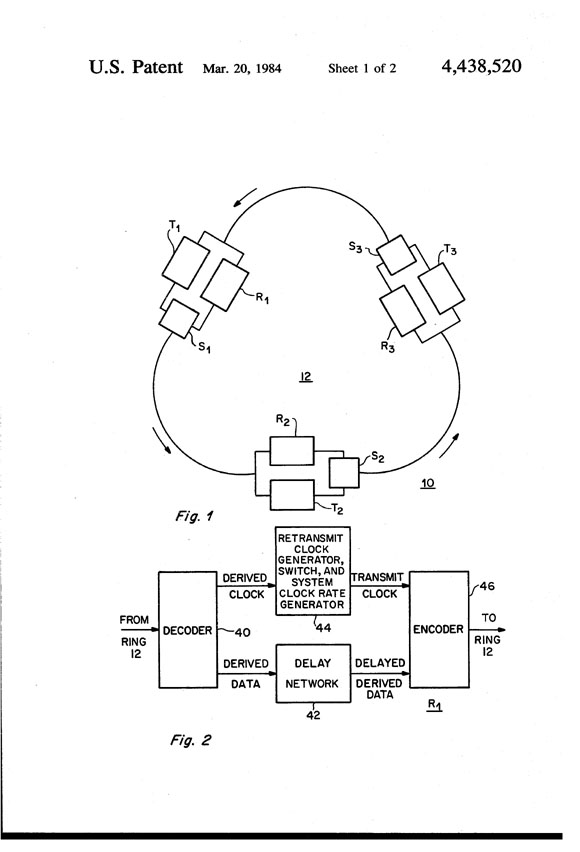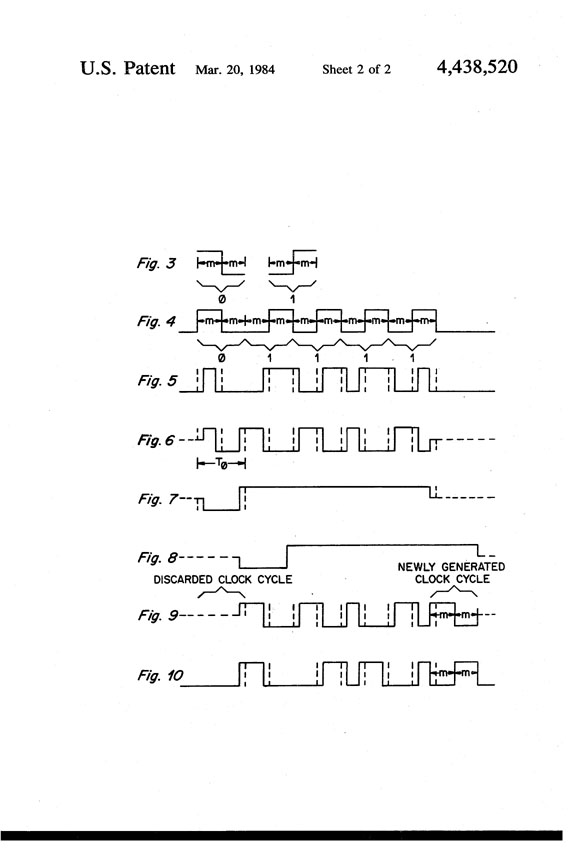| ( 1 of 1 ) |
| United States Patent | 4,438,520 |
| Saltzer | March 20, 1984 |
A system for regenerating an n-bit data word on a token mediated communications ring includes a decoder for receiving the data signal from the ring and deriving the n-bit data word and an associated clock signal from the received data signal. A re-transmit clock generator generates a transmit clock signal incorporating the i.sup.th through the n.sup.th cycles from the derived clock signal, followed by i cycles at the nominal system clock rate. A delay network delays the derived data word by a period approximately equal to the period of the nominal system clock. An encoding network regenerates the n-bit data word for re-transmission on the ring by encoding the delayed derived data word with the transmit clock signal.
| Inventors: | Saltzer; Jerome H. (Waban, MA) |
| Assignee: | Massachusetts Institute of Technology (Cambridge, MA) |
| Appl. No.: | 285800 |
| Filed: | July 22, 1981 |
| Current U.S. Class: | 375/214; 370/452; 370/501; 370/503 |
| Intern'l Class: | H04J 006/02 |
| Field of Search: | 178/70 R,70 T 370/86,89,97 328/163,164 375/3,4,102,110,118 |
| 3113268 | Dec., 1963 | Horak | 375/3. |
| 3737585 | Jun., 1973 | Ghosh | 370/97. |

